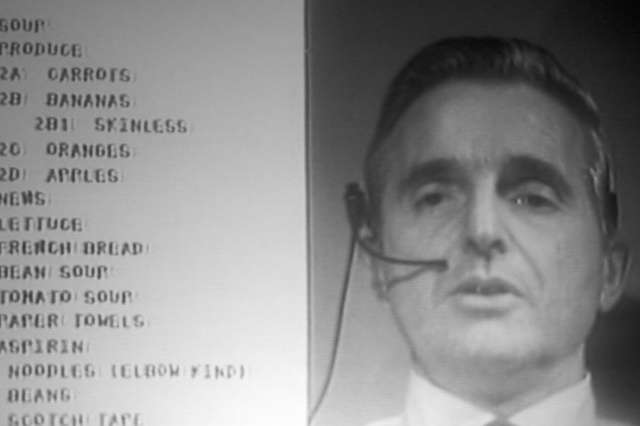
50 years on, we’re living the reality first shown at the “Mother of All Demos”

A half century ago, computer history took a giant leap when Douglas Engelbart—then a mid-career 43-year-old engineer at Stanford Research Institute in the heart of Silicon Valley—gave what has come to be known as the “mother of all demos.”
On December 9, 1968 at a computer conference in San Francisco, Engelbart showed off the first inklings of numerous technologies that we all now take for granted: video conferencing, a modern desktop-style user interface, word processing, hypertext, the mouse, collaborative editing, among many others.
Even before his famous demonstration, Engelbart outlined his vision of the future more than a half-century ago in his historic 1962 paper, “Augmenting Human Intellect: A Conceptual Framework.”
To open the 90-minute-long presentation, Engelbart posited a question that almost seems trivial to us in the early 21st century: “If in your office, you as an intellectual worker were supplied with a computer display, backed up by a computer that was alive for you all day, and was instantly responsible—responsive—to every action you had, how much value would you derive from that?”
Of course at that time, computers were vast behemoths that were light-years away from the pocket-sized devices that have practically become an extension of ourselves.
-
One of the opening slides from the “Mother of All Demos.”
-
The Demo showed word processing, many years before it became mainstream.
-
In Engelbart’s UI, one could use a mouse to move a cursor, a revolutionary idea at the time.
-
Douglas Engelbart, as seen during the presentation.
-
Playing the the role of Douglas Engelbart, the late inventor of the internet, Mikel Rouse (C) performs in “The Demo” at Stanford University in Stanford, California on March 31, 2015.
-
William English, Engelbart’s lead engineer, testing the first mouse.SRI International
Engelbart, who passed away in 2013, was inspired by a now-legendary essay published in 1945 by Vannevar Bush, physicist who had been in charge of the United States Office of Scientific Research and Development during World War II.
That essay, “As We May Think,” speculated on a “future device for individual use, which is a sort of mechanized private file and library.” It was this essay that stuck with a young Engelbart—then a Navy technician stationed in the Philippines—for more than two decades.
By 1968, Engelbart had created what he called the “oN-Line System,” or NLS, a proto-Intranet. The ARPANET, the predecessor to the Internet itself, would not be established until late the following year.
Five years later, in 1973, Xerox debuted the Alto, considered to be the first modern personal computer. That, in turn served as both the inspiration for both the Macintosh and Microsoft Windows, and the rest, clearly, is history.
“Doug and [J.C.R. Licklider] were two of our farthest seeing visionaries,” Vint Cerf, the co-creator of the TCP/IP protocol, told Ars in July 2013.
“Doug’s NLS was as close to Vannever Bush‘s vision of Memex as you could get in the 1960s. He had a keen sense of the way in which computers could augment human capacity to think. Much of what transpired at Xerox PARC owes its origins to Doug and the people who created NLS with him. The [Web] is a manifestation of some of what he imagined or hoped although his aspirations exceeded even that in terms of human and computer partnerships.”
In 2015, Stanford University hosted “The Demo,” a work of musical theater inspired by this occasion.
The Computer History Museum in Mountain View, California is hosting a few events related to the anniversary, both on December 9 with another one later in the week, on December 12.




